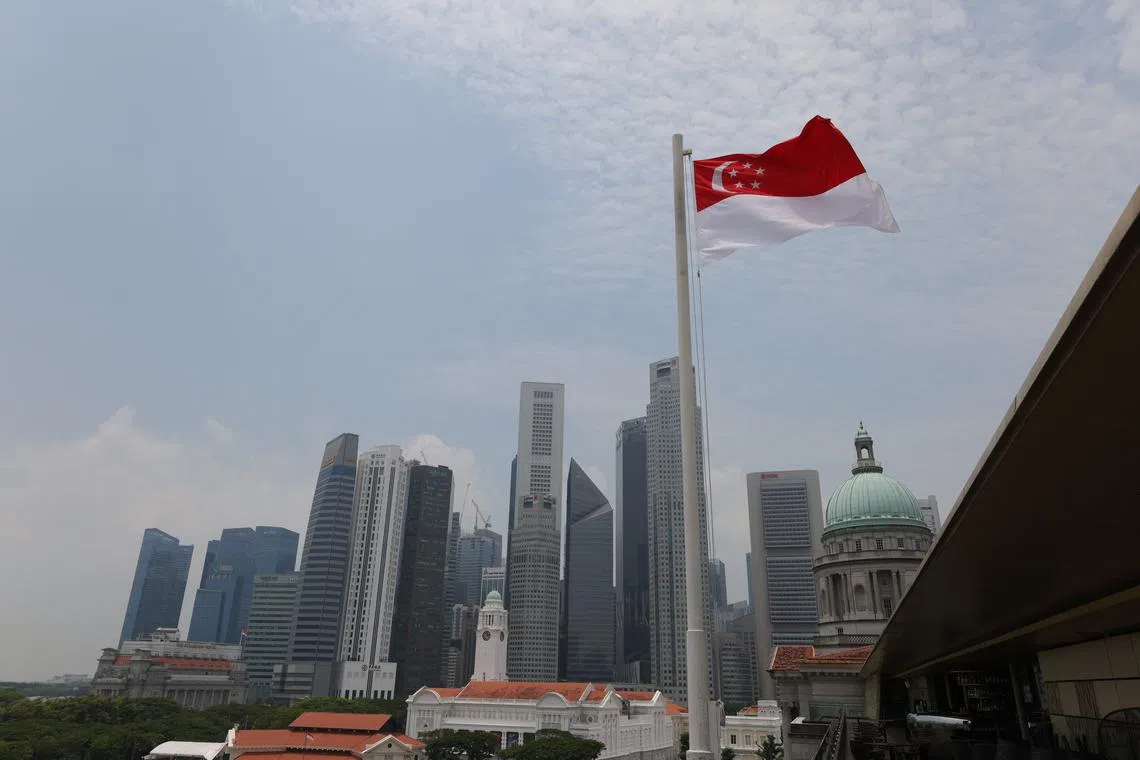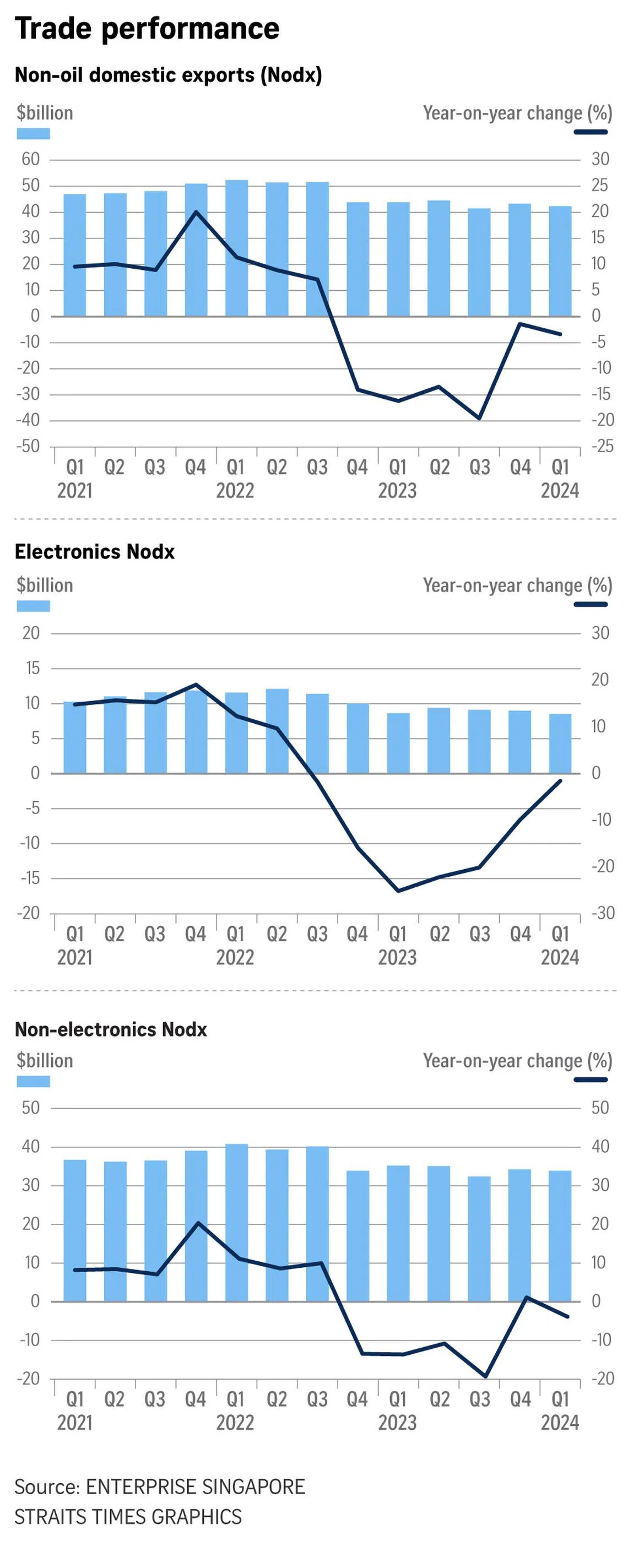Singapore expects key exports to come in at lower end of 4-6% growth forecast for 2024
Sign up now: Get ST's newsletters delivered to your inbox

Most of Singapore’s key trade partners, including China, the United States, Europe and Asean, are projected to grow in 2024.
ST FILE PHOTO
Follow topic:
SINGAPORE - Singapore expects growth in key exports to come in at the lower end of its 4 per cent to 6 per cent growth forecast in 2024 due to a disappointing start to the year.
Non-oil domestic exports (Nodx) fell 3.4 per cent to around $42 billion in the first quarter of 2024 on the back of volatile pharmaceutical demand, following a 1.4 per cent decline in the previous quarter.
“Given the worse-than-expected first-quarter performance, there are downside risks to the Nodx forecast, which could come at the lower range of the 4 per cent to 6 per cent forecast,” Enterprise Singapore said on May 23.
However, support is still expected from a recovery in electronics demand in the second half of 2024, it added. This will be driven by demand for consumer devices and artificial intelligence servers, among others.
Enterprise Singapore noted that the International Monetary Fund had projected that global economic activity would grow by 3.2 per cent in 2024.
Most of Singapore’s key trade partners, including China, the United States, Europe and Asean, are projected to grow in 2024.
“Taking the above into consideration, the 2024 growth forecast for both total merchandise trade and Nodx is maintained at 4 per cent to 6 per cent,” the trade agency said.
Ms Selina Ling, chief economist at OCBC Bank, reiterated her warning that the lower end of the 2024 forecast might even be at risk as the first four months’ performance was already at a weaker than expected 4.9 per cent contraction from 2023.
Mr Barnabas Gan, acting group chief economist at RHB Singapore, said key support for Singapore’s economy would be electronics, precision engineering and machinery, as well as wholesale trade.
In the first quarter of 2024, Singapore’s non-electronics shipments fell from the same period a year earlier, after registering growth in the previous quarter.
While electronics shipments were down, the pace of decline eased during the first quarter, marking the mildest decline in seven quarters.
Compared with a year earlier, domestic exports of electronic products decreased by 1.6 per cent in the first three months of 2024, easing from a 9.9 per cent decline in the fourth quarter of 2023.
Telecommunications equipment, diodes and transistors and parts of personal computers contributed the most to the decline in electronics shipments.
Integrated circuits, which made up about half the shipments, grew by $100 million – registering year-on-year growth after declining for six straight quarters.
Mr Gan said electronics exports could expand by double digits in the second half of 2024, compared with the double digits of contractions over the same period in 2023.
Domestic exports of non-electronic products declined by 3.8 per cent in the first quarter, after growing 1.1 per cent in the fourth quarter. The largest contributors to the decline were pharmaceuticals, ship and boat parts, and electrical circuit apparatus.
Shipments of key exports to Europe, the US and Japan declined in the first three months of 2024.

The outlook for total trade remained cautiously optimistic on the back of higher oil prices.
Total merchandise trade posted a turnaround from the preceding five quarters of decline, growing 4.8 per cent in the first quarter and reversing the 2.1 per cent decline in the fourth quarter of 2023.
Oil trade, which formed 20 per cent of total merchandise trade in the first quarter, grew by 3.4 per cent after declining 3.3 per cent in the fourth quarter of 2023.
Non-oil trade rose by 5.2 per cent, following a 1.8 per cent decline in the previous quarter.
In the first quarter of 2024, the Singapore economy grew by 2.7 per cent year on year, fuelled by the finance and insurance, transportation and storage, as well as wholesale trade sectors.


